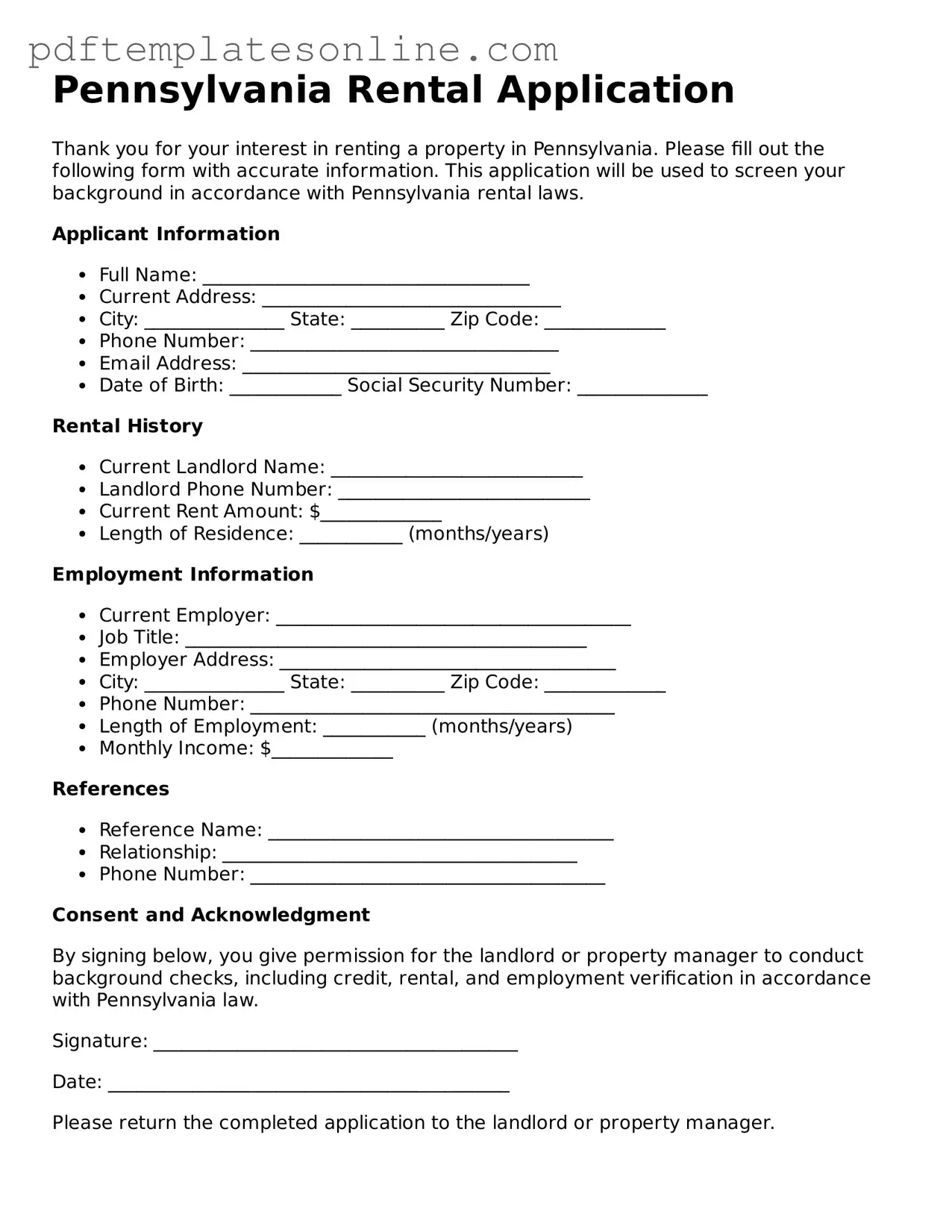Filling out a rental application in Pennsylvania can feel overwhelming, but avoiding common mistakes can make the process smoother. One major error is not providing complete information. Landlords rely on accurate details to assess your application. Omitting crucial information, such as your current address or employment history, can raise red flags and lead to rejection.
Another frequent mistake is failing to proofread the application. Simple typos or misspellings can create confusion. A small error in your name or contact information can result in missed communications. Always double-check your application for accuracy before submitting it.
Many applicants also underestimate the importance of providing references. Landlords often want to hear from previous landlords or employers. If you leave this section blank or provide outdated contacts, it may hinder your chances of securing the rental. Having reliable references ready can strengthen your application.
Some people forget to include necessary documentation. Pay stubs, tax returns, or identification may be required to verify your income and identity. Not attaching these documents can delay the process or lead to outright denial of your application.
In addition, applicants sometimes misrepresent their financial situation. While it may be tempting to exaggerate income or downplay debts, honesty is crucial. Landlords conduct background checks and can easily uncover discrepancies, which could jeopardize your chances of approval.
Another mistake involves neglecting to read the terms of the lease agreement. Some applicants rush through the application process and fail to understand the rental terms. Being unaware of policies regarding pets, maintenance, or lease length can lead to complications later on.
Providing an incomplete rental history is also a common pitfall. If you have moved frequently, it’s essential to list all previous addresses and landlords. Failing to do so can create suspicion and lead to questions about your reliability as a tenant.
Moreover, applicants sometimes forget to sign and date the application. This may seem trivial, but an unsigned application is often considered invalid. Always ensure that you have completed every section, including your signature, before submission.
Lastly, some individuals overlook the application fee. Many landlords require a fee to process applications. Forgetting to include this payment can delay your application or result in its rejection. Always check the requirements and be prepared to submit the necessary fees.
